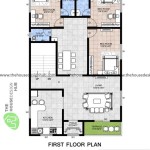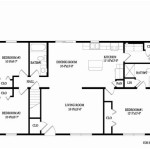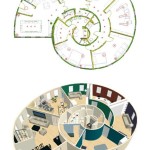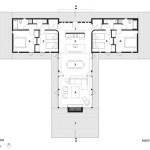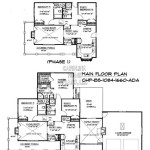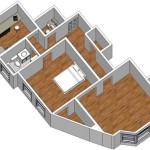Shed Tiny House Plans: The Benefits of Living Small Groups
The tiny house movement has gained considerable momentum in recent years, driven by a confluence of factors including environmental consciousness, financial prudence, and a desire for simplified living. Within this movement, shed tiny house plans offer a particularly accessible and intriguing entry point. These plans leverage the common availability and affordability of shed structures, converting them into compact and functional living spaces. A critical, often overlooked, aspect of this lifestyle is the formation and participation in "living small groups," communities of individuals who actively support, share resources, and navigate the unique challenges and rewards of tiny home living.
Shed tiny house plans represent a significant departure from traditional home construction. They prioritize efficient space utilization, multi-functional design, and a minimalist approach to possessions. The appeal lies in their potential for affordability, faster construction timelines, and reduced environmental impact compared to conventional housing. However, transitioning to a smaller living space presents unique challenges related to storage, organization, and social interaction. This is where the benefits of living small groups become increasingly apparent.
Financial Advantages and Reduced Living Costs
One of the primary motivations for adopting a tiny house lifestyle, particularly utilizing shed tiny house plans, is the significant potential for financial savings. Traditional homeownership involves substantial expenses, including mortgage payments, property taxes, homeowners insurance, and ongoing maintenance costs. Shed tiny houses typically involve a significantly lower initial investment, often financed through personal savings or smaller loans. Furthermore, because of their smaller size, they generally incur lower property taxes and insurance premiums.
Beyond the initial cost savings, a shed tiny house can dramatically reduce ongoing living expenses. Smaller living spaces require less energy for heating and cooling, resulting in lower utility bills. The minimalist principles inherent in tiny house living often lead to reduced consumption of goods and services, further contributing to reduced spending. Individuals are more likely to prioritize experiences over material possessions, shifting their financial focus towards travel, hobbies, or investments.
Living small groups can further enhance these financial benefits. Members can share resources such as tools, equipment, and even land. Collaborative purchasing of bulk goods and shared services, such as childcare or landscaping, can further reduce individual expenses. These groups often pool knowledge and expertise, offering advice on cost-effective construction techniques, energy-efficient appliances, and strategies for minimizing waste. This collective approach to resource management amplifies the financial advantages inherent in tiny house living.
Environmental Sustainability and Reduced Footprint
The environmental impact of housing is a growing concern, with traditional homes contributing significantly to carbon emissions, resource depletion, and waste generation. Shed tiny house plans offer a more sustainable alternative. Their smaller size inherently requires fewer building materials, reducing the demand for natural resources and minimizing construction waste. Furthermore, they often incorporate eco-friendly building practices, such as using recycled materials, installing solar panels, and implementing rainwater harvesting systems.
The minimalist lifestyle associated with tiny house living also contributes to a smaller environmental footprint. Individuals tend to consume less energy, generate less waste, and purchase fewer goods. This shift in consumption patterns reduces the demand for manufactured products, minimizing the environmental impact associated with production, transportation, and disposal. The emphasis on sustainable practices extends beyond the home, often influencing lifestyle choices related to food, transportation, and entertainment.
Living small groups play a crucial role in promoting environmental sustainability within the tiny house community. Members can share knowledge and best practices related to sustainable living, such as composting, gardening, and energy conservation. They can also collaborate on initiatives such as community gardens, recycling programs, and renewable energy projects. The collective effort towards environmental stewardship amplifies the positive impact of individual actions, creating a more sustainable and resilient community. Shared knowledge and resources facilitate the adoption of eco-friendly technologies and practices that might be less accessible to individuals living in isolation.
Community Support and Shared Experiences
Transitioning to a tiny house lifestyle can be a significant adjustment, requiring individuals to adapt to smaller living spaces, simplify their possessions, and embrace a new set of values. This transition can be particularly challenging for those who are accustomed to larger homes and traditional social norms. The support and camaraderie offered by living small groups can be invaluable in navigating these challenges and fostering a sense of belonging.
Living small groups provide a platform for sharing experiences, exchanging ideas, and offering mutual support. Members can connect with others who understand the unique challenges and rewards of tiny house living, fostering a sense of community and reducing feelings of isolation. These groups often organize social events, workshops, and skill-sharing sessions, providing opportunities for members to connect, learn, and grow together. The shared experience of living in small spaces creates a strong bond and a sense of collective identity.
The benefits of community support extend beyond emotional well-being. Living small groups can also provide practical assistance, such as helping with construction projects, sharing tools and equipment, and offering advice on home maintenance. Members can pool their skills and resources to overcome challenges that might be insurmountable for individuals acting alone. This collaborative approach to problem-solving fosters a sense of empowerment and resilience, making the tiny house lifestyle more sustainable and enjoyable in the long term. The shared experiences, both positive and challenging, contribute to a stronger sense of community and a richer, more fulfilling lifestyle.
Furthermore, living small groups can serve as a powerful advocacy voice for the tiny house movement. By organizing collectively, these groups can engage with local governments to address zoning regulations, building codes, and other policy issues that affect tiny house dwellers. They can also educate the public about the benefits of tiny house living and promote the adoption of more sustainable housing practices. This collective action can help create a more welcoming and supportive environment for tiny house communities.
Shed tiny house plans, when combined with the support of living small groups, offer a compelling pathway to a simpler, more sustainable, and more community-oriented lifestyle. The economic, environmental, and social benefits of this approach extend beyond individual gains, contributing to a more resilient and equitable society. The shared experiences and collective action within these groups amplify the positive impact of tiny house living, fostering a sense of belonging and promoting a more sustainable future.
The success of shed tiny house plans also extends to addressing specific needs within communities. For instance, they can provide affordable housing options for veterans, seniors, and individuals with limited incomes. Living small groups can play a crucial role in connecting these individuals with resources, providing support, and fostering a sense of community integration. This collaborative approach to housing solutions can address critical social issues and create more inclusive and equitable communities.
While shed tiny house plans offer numerous advantages, careful planning and execution are essential. It's important to thoroughly research local building codes and zoning regulations to ensure compliance. Proper insulation, ventilation, and moisture control are crucial for creating a comfortable and healthy living environment. Engaging with a living small group can provide valuable insights and guidance throughout the planning and construction process, helping to avoid common pitfalls and ensure a successful outcome.

Could You Live In A Tiny House

The Tiny Homes Movement Living Large In Small Spaces

The Tiny Homes Movement Living Large In Small Spaces

16 Cutest Tiny Home Plans With Cost To Build Craft Mart

5 Amazing Ways Tiny House Movement Can Teach Architecture United Homes

Tiny House Living Is All The Rage In Homes Com Real Estate Tips
The Tiny House Movement Is Booming So Why Aren T More Of Us Actually Living In Them Abc News

Tiny House Living Spotlight North Ina Homes Com Real Estate Tips

Tiny House Expedition Living For College Students Pros Cons

Prefab Tiny House Life
Related Posts

